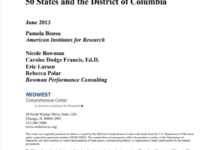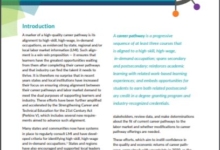The Strengthening Career and Technical Education for the 21st Century Act (Perkins V) places a strong emphasis on the alignment of Career Technical Education (CTE) programs of study with state, regional and local economies. The legislation requires Perkins-funded programs to prepare students for “high-skill, high-wage, or in-demand occupations.” These terms — high skill, high wage and in demand — are foundational to Perkins V, appearing in both the purpose of the law and the definition of CTE.
As with many Perkins V requirements, the responsibility of defining these terms rests solely with states, providing them with a major opportunity to set a meaningful bar for determining which career opportunities anchor their CTE programs. The stronger focus on labor market alignment compels state CTE leaders to ensure that all program offerings are relevant to today’s economy and that learners will participate in CTE programs with data-driven and validated labor market value.
Aligning to Opportunity: State Approaches to Setting High Skill, High Wage and In Demand, describes some approaches that states are taking to partner across agencies to access and review labor market information; develop definitions for high skill, high wage and in demand; provide local flexibility, while maintaining guardrails; and disseminate the information widely to key audiences.
The report was made possible by the generous support of the Joyce Foundation.
View Aligning to Opportunity infographic here.





